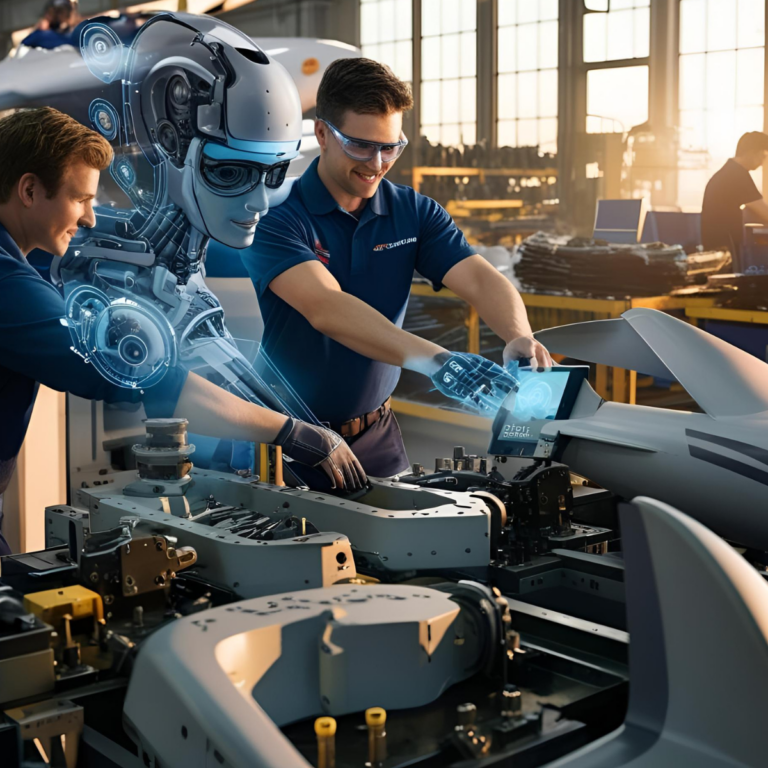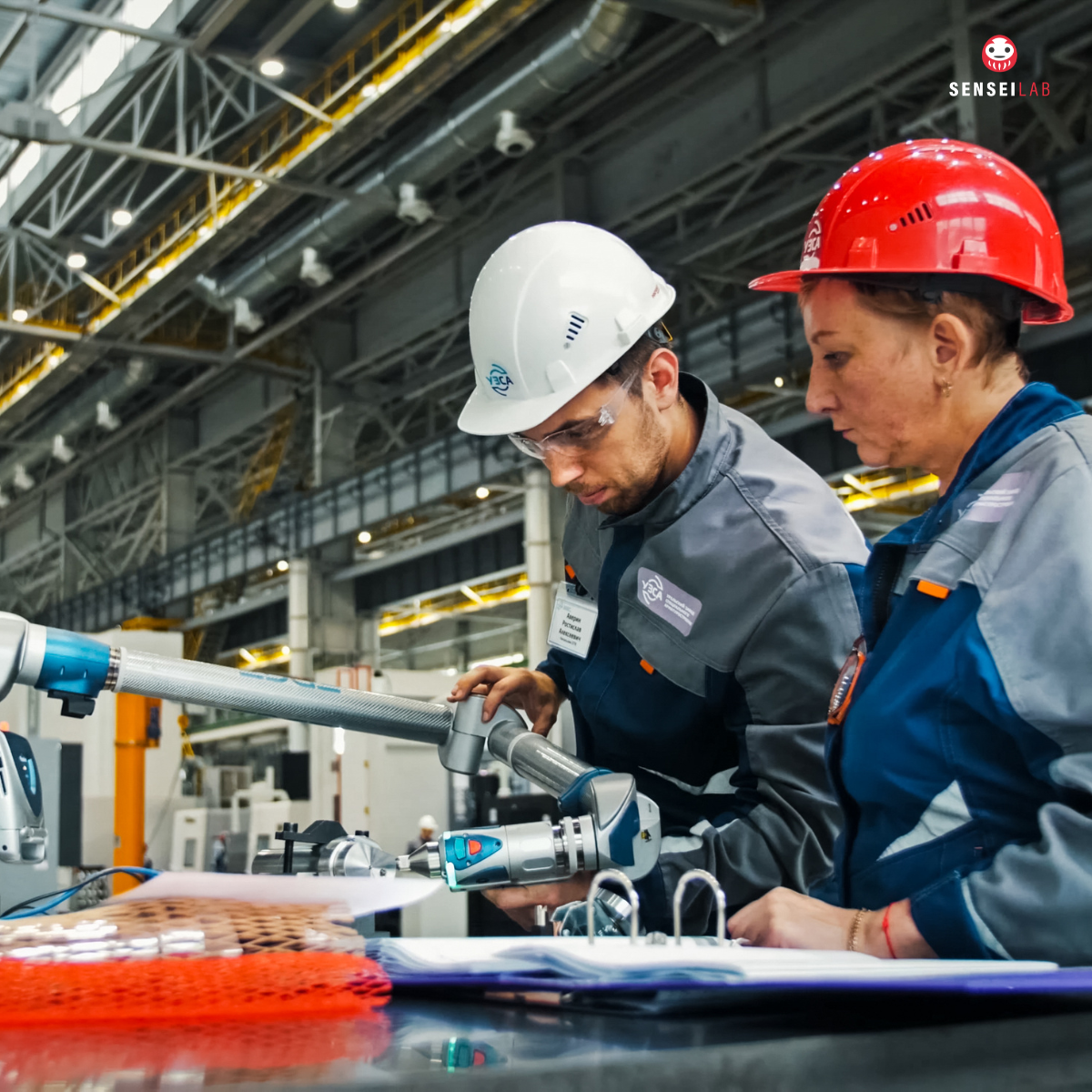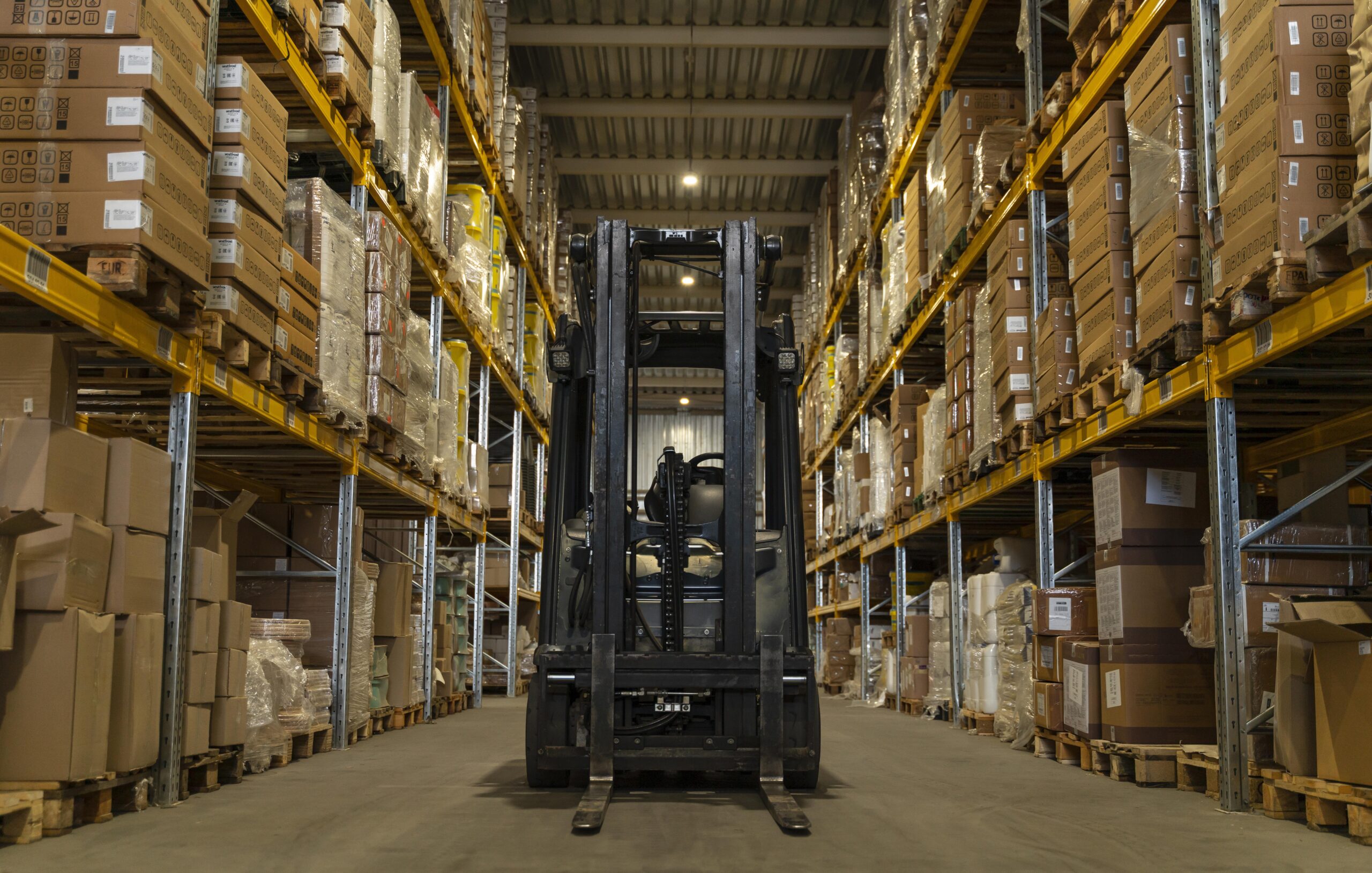AI-Driven Design Optimization: Redefining Aerospace Engineering
One of the most exciting breakthroughs in aerospace manufacturing is AI-driven generative design. By leveraging computational algorithms, engineers can explore vast design possibilities and optimize components for weight, strength, and cost-effectiveness. Unlike traditional design methods, AI generates intricate, non-intuitive geometries that improve aerodynamics, reduce weight, and enhance fuel efficiency.
Case in Point: Aerospace giants like Airbus and Boeing are harnessing AI-powered generative design to develop lighter, stronger aircraft structures. The result? Aircraft that consume less fuel, reduce emissions, and offer superior performance.
Predictive Maintenance and AI-Enhanced Quality Control
One of the most expensive inefficiencies in aerospace is unplanned maintenance. AI-driven predictive maintenance is a game-changer, analyzing vast streams of sensor data from aircraft systems to predict failures before they occur. This capability significantly reduces downtime, enhances safety, and optimizes fleet performance.
Example: GE Aerospace leads the industry with its AI-driven digital twins. These virtual replicas of aircraft engines monitor real-time performance, identifying potential failures long before they become problems. This proactive approach prevents costly disruptions and enhances airline reliability.
Quality control is another domain where AI is delivering outstanding results. Traditional manual inspections are time-consuming and prone to human error. AI-powered computer vision systems, capable of scanning and identifying defects with pinpoint accuracy, are transforming the inspection process.
Success Story: Airbus has deployed AI-based computer vision systems, drastically reducing inspection times and significantly improving defect detection rates. These intelligent systems ensure that aircraft components meet the highest safety and quality standards.
AI-Enhanced Robotics: The Next Level of Automation
Aerospace manufacturing demands extreme precision, and AI-powered robotics are stepping in to meet this challenge. Intelligent robotic systems equipped with AI algorithms can perform intricate assembly tasks with unmatched accuracy, speed, and consistency.
Case Study: Boeing utilizes AI-enhanced robotics for drilling, painting, and assembly operations. This automation has streamlined production, reduced cycle times, and minimized human errors, leading to higher efficiency and cost savings.
A Canadian startup, Xaba Inc., is pushing the boundaries further. Their AI-driven robotic systems, developed in collaboration with Lockheed Martin, transform standard industrial robots into fully intelligent, self-adjusting machines. These robots adapt to production constraints in real-time, reducing the need for human supervision and increasing manufacturing agility.
AI and Supply Chain Optimization: Eliminating Waste and Delays
Lean manufacturing prioritizes eliminating waste, and AI is making this even more achievable by revolutionizing supply chain management. AI algorithms enhance demand forecasting, optimize inventory levels, and streamline logistics.
The Numbers Speak: According to a McKinsey report, AI-driven forecasting improves accuracy by 10% to 20%, leading to a 5% reduction in inventory costs and a 2% to 3% revenue increase. These improvements enable aerospace manufacturers to maintain leaner, more responsive supply chains, reducing lead times and eliminating excess inventory.
Challenges and the Road Ahead
While the benefits of AI in aerospace manufacturing are immense, challenges remain. High implementation costs, integration with legacy systems, workforce skill gaps, and cybersecurity concerns pose significant hurdles. However, these barriers are rapidly being addressed through industry-wide investments and advancements in AI technology.
The future of AI-driven Lean manufacturing is incredibly promising. Self-learning production systems, AI-enhanced additive manufacturing, and autonomous quality control are just the beginning. As AI capabilities continue to evolve, aerospace manufacturing will become more adaptive, cost-efficient, and capable of meeting the ever-growing complexity of modern aircraft production.




